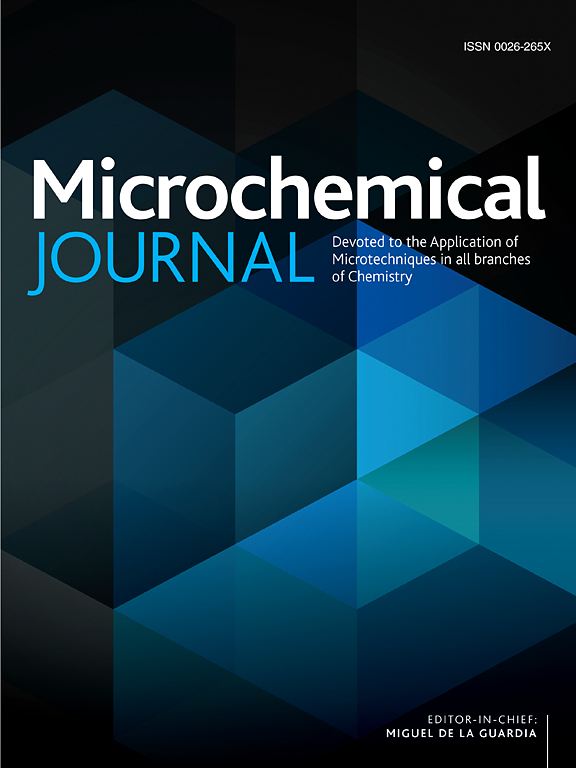Role of deep eutectic solvents as alternate solvents in the microextraction and estimation of pesticide, insecticide, fungicide residues and metal contaminants in tea (Camellia sinensis)
IF 4.9
2区 化学
Q1 CHEMISTRY, ANALYTICAL
引用次数: 0
Abstract
Teas are produced scientifically in well organised plantation industry This review discusses the microextraction and estimation of metal contaminants, residues of pesticides, insecticides and fungicides from various tea samples using deep eutectic solvents (DES) in different microextraction techniques. DESs are considered as green/safe solvents as these are easily decomposable biologically and eco-friendly, when compared to traditional organic solvents. Homogeneous DES liquids are formed by mixing hydrogen bond donor and hydrogen bond acceptor under appropriate conditions. Natural Deep Eutectic Solvents (NADES) are produced from the components existing in the nature as primary metabolites. Versatility of DES/NADES is good, as these are useful in different varieties of microextraction techniques. Various and suitable parameters are optimised for microextraction techniques to separate maximum metal contaminants as well as residues of phthalates, benzotriazoles, benzothiazoles, bisphenols, endocrine disrupting phenols, polycyclic aromatic hydrocarbons, general insecticides, pesticides and fungicides from variety of tea samples. Appropriate estimation techniques are developed. Micro quantities of samples and solvents are used in these techniques. Selected modern techniques [Liquid-liquid microextraction (LLME), Liquid phase microextraction (LPME), Solid phase extraction (SPE), Solid phase microextraction (SPME), Cloud point extraction (CPE), Magnetic multiwall carbon nano tubes (MMWCNT), Metal Organic Frames (MOFs)] are reported for exclusive and complete separation of contaminants and residues from tea sample using minimum amount of DES/NADES in shorter time. Bioenergy is saved due to minimum use of solvents as well as shorter estimation periods. Lower LODs and LOQs are reported using different chromatographic and spectroscopic techniques. Greenness of the techniques using DESs is improved, when compared to toxic conventional organic solvents.

求助全文
约1分钟内获得全文
求助全文
来源期刊

Microchemical Journal
化学-分析化学
CiteScore
8.70
自引率
8.30%
发文量
1131
审稿时长
1.9 months
期刊介绍:
The Microchemical Journal is a peer reviewed journal devoted to all aspects and phases of analytical chemistry and chemical analysis. The Microchemical Journal publishes articles which are at the forefront of modern analytical chemistry and cover innovations in the techniques to the finest possible limits. This includes fundamental aspects, instrumentation, new developments, innovative and novel methods and applications including environmental and clinical field.
Traditional classical analytical methods such as spectrophotometry and titrimetry as well as established instrumentation methods such as flame and graphite furnace atomic absorption spectrometry, gas chromatography, and modified glassy or carbon electrode electrochemical methods will be considered, provided they show significant improvements and novelty compared to the established methods.
 求助内容:
求助内容: 应助结果提醒方式:
应助结果提醒方式:


